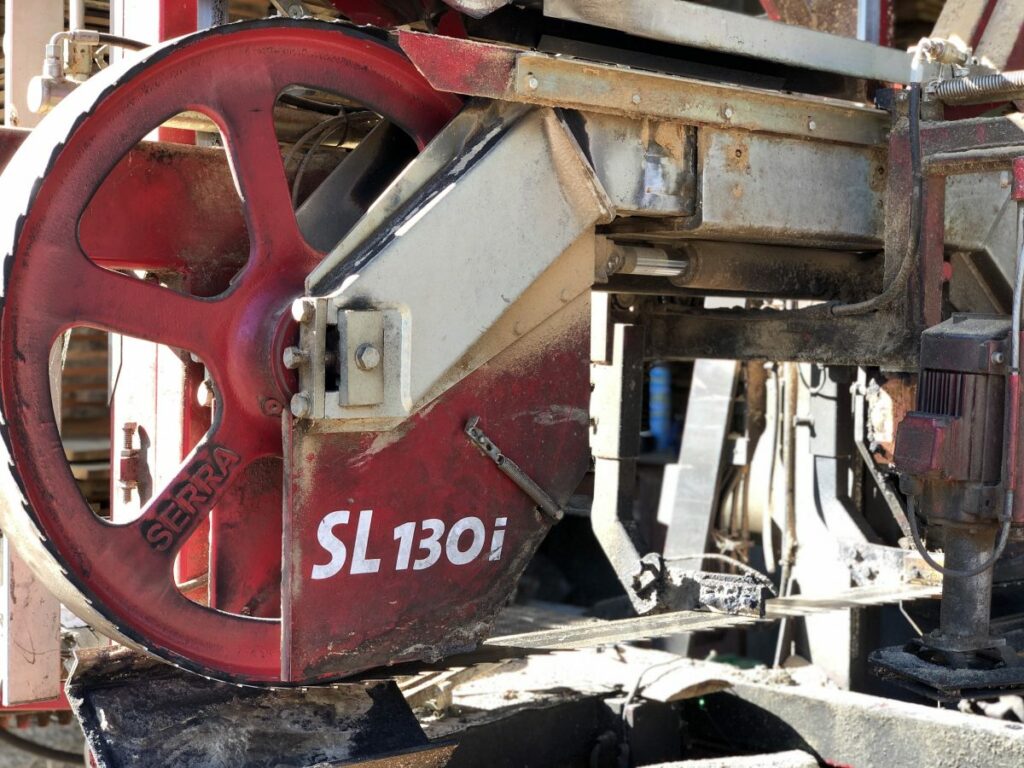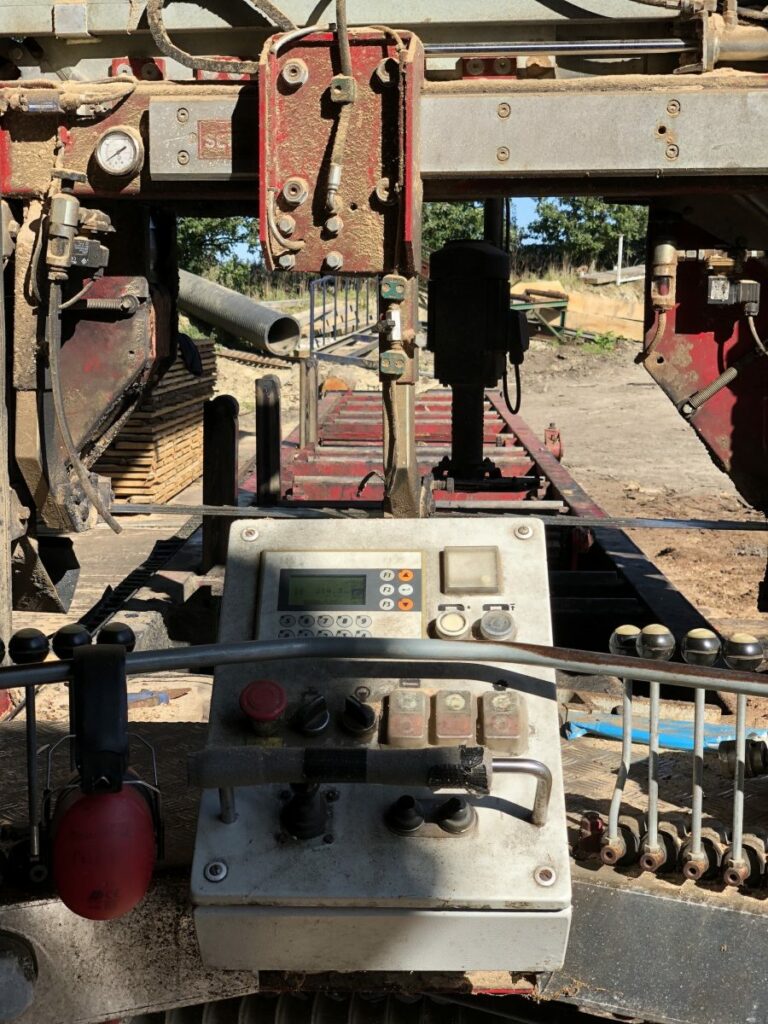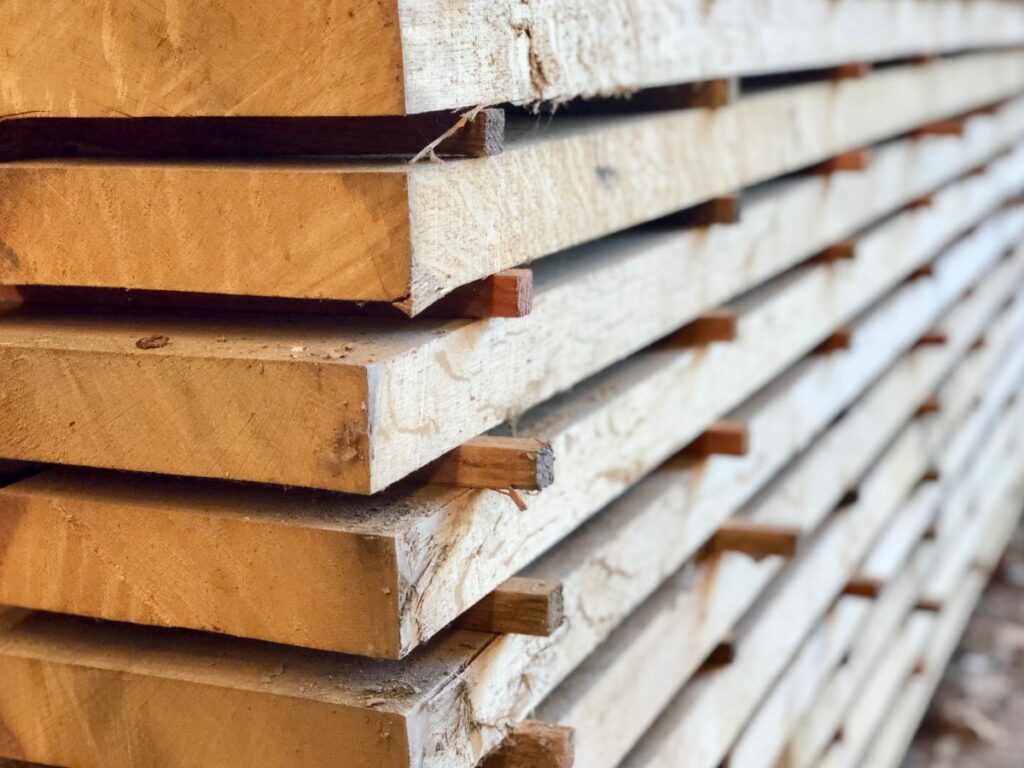
It’s been sawing season here at UK Hardwoods ltd. As one of the only timber mills in the south west sawing from tree to timber, it’s an important time of year for us. We’re welcoming September’s sunny weather here, keeping it dry for one of our busiest months.
We saw our timber throughout the year, however, most of our stock is sawn between the end of August and the beginning of October, when the climate suits our trees the best. It’s during this time we will saw between 600-700 tonnes (16,000 Hoppus ft). We’re looking for ideal moisture conditions when sawing to dry our boards carefully. The hot summer months of June to August can be too dry to saw, and can result in boards drying too quickly in the scorching sun. At UK Hardwoods ltd we slow dry our boards in cooler weather, preventing cracking, warping and degrading as a result of a fast drying process. Some of our boards will air dry for up to 4 years.
We start of with felled trees sourced from the UK, and this year, all of our trees have been from south west parcels, as local as our home counties of Devon and neighbouring Cornwall.
During the sawing process, we look to cut boards of mainly 1” for use as Flooring, with joinery grade trees being cut into thicker boards for Joinery and carpentry. Beams are cut from the centre of some, with about 40% of the trees having beaming quality timber in their centres.
For the sawing process, we use our Serra Baveria SL 130i which is capable of cutting trees up to 7.4 m in length and 1.3m metres in diameter. Our saw runs off of electricity from the on site solar farm, and will be continuous for an 8 hour day. The saw blade however, needs to be changed manually at least every 6 hours, at which point, both Sawyer workers and saw get a lunch break. If we hit metal during the sawing process, for example there is an old gate hanging found grown into the tree, then this will ruin the blade, and it must be changed immediately.
Our saw is the heart of the sawing process and we rely hugely on its consistency and accuracy. With the right training and knowledge, the saw helps us create quality stock and precise pieces cut to sizes within 1mm.


We use the saw for cutting all of our oak, ash and chestnut trees. Oak we find is an easier timber to saw, with Ash blunting the blade at a quicker rate. Elm is known for having lumpy deposits within the timber which blunt the blades far quicker than most timbers- not an issue for the sawmills of 2019.
As the tree is being sawn, we stack the layers of boards into neat stacks, layered between batons at widths 400mm apart. We’re precise and accurate when it comes to this part of the process, as it later helps us determine kiln load volumes, and lengths of packs far quicker. It also aids efficient drying and allows the yard to remain neat and tidy. Each baton is sawn from Scots Pine, to prevent any potential disease cross spreading.
A tree will typically take 20 minutes to saw before the next tree is loaded onto the saw for inspection and sawing. The waste bark and outsells from the tree are chipped and used to feed the biomass boiler, which in turn heats our kiln. The sawdust from the process is sold to a local farmer, and is used as free range chicken bedding.
The main sawing process is over for now for another year. It’s been a joy to have such lovely weather to be sawing in, fingers crossed for next year. Watch some video footage of our yard and hear more about our process.

